Table of Contents
Ever wonder if your fluffy stack of pancakes counts as a grain? It's a question many of us ponder as we navigate the world of healthy eating. We all know breakfast is important, but understanding what we put on our plates can be confusing. This article will break down the mystery of grains, especially when it comes to pancakes. We'll explore what MyPlate recommends, the difference between whole and refined grains, and finally, answer the burning question: would pancakes be a grain? We'll also look at how much grain you need each day and the health benefits they bring, particularly whole grains. By the end, you'll know how pancakes fit into a balanced diet and have the tools to make informed choices using resources like MyPlate. So, grab your syrup and let's get started!
MyPlate: Your Guide to Healthy Eating
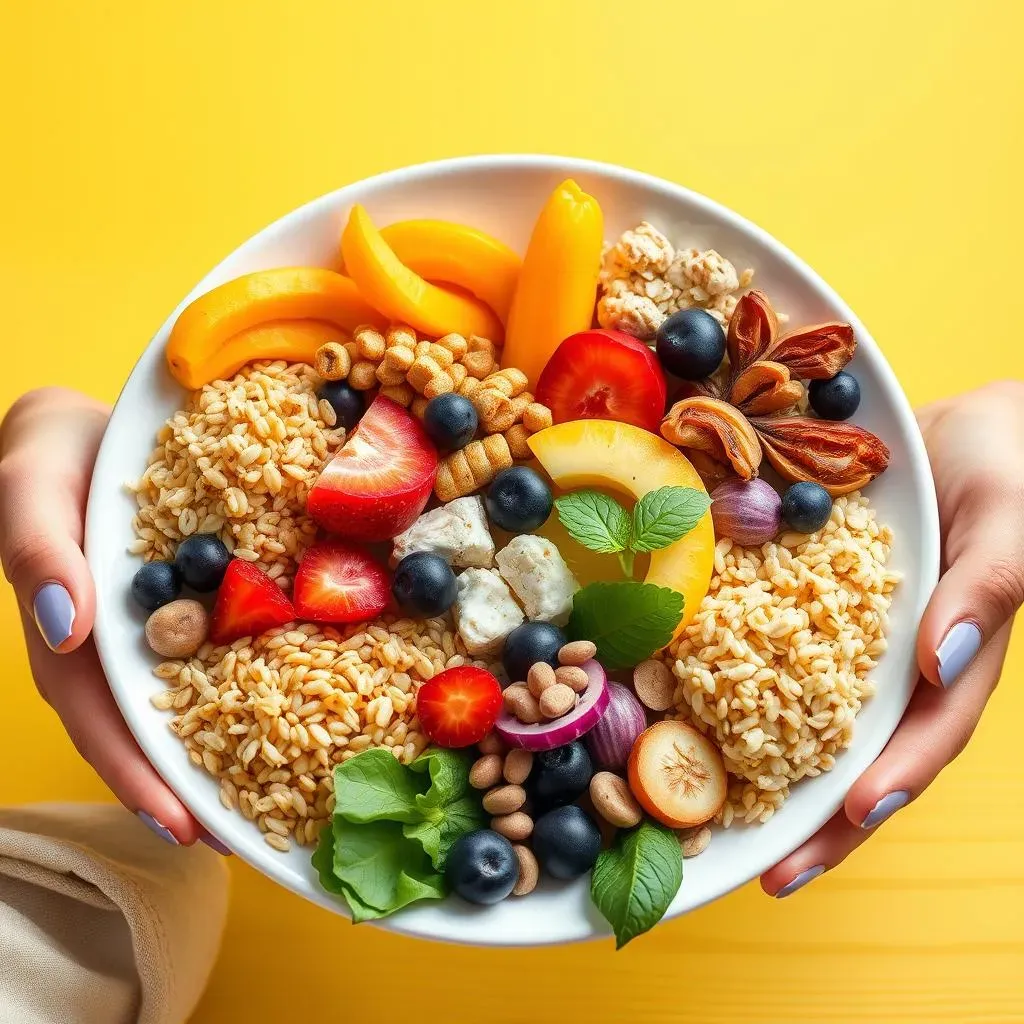
MyPlate: Your Guide to Healthy Eating
What's the Deal with MyPlate?
so you've probably heard about MyPlate, right? It's not some fancy new diet fad, but a super simple guide to help you build a healthy plate at every meal. Think of it as a visual aid, showing you the right proportions of different food groups. It's like a cheat sheet for eating well, created by the U.S. Department of Agriculture. Forget complicated calorie counting or weird food restrictions; MyPlate is all about balance and making smart choices.
The idea is to fill half your plate with fruits and veggies, a quarter with grains, and a quarter with protein. Add a side of dairy, and you're good to go. It's not about perfection, but about making better choices more often. This isn't just for adults either. Kids can use it too to get the right balance of foods. It is really a good starting point for anyone looking to improve their diet.
MyPlate's Food Groups: The Basics
MyPlate breaks down food into five main groups: fruits, vegetables, grains, protein, and dairy. Each group provides essential nutrients that our bodies need to function properly. Fruits and vegetables are packed with vitamins and minerals, while grains give us energy. Protein helps build and repair tissues, and dairy is important for strong bones. It's not about excluding anything, but about making sure you're getting a good mix of all these groups.
What I find cool is that it's not a rigid system, it's adaptable to your own preferences. You can swap out different types of veggies, choose your favorite fruits, and vary your protein sources. It's all about finding what works for you and making healthy choices within each category. MyPlate is a great tool to guide us through that process.
Food Group | What it Provides | Examples |
|---|---|---|
Fruits | Vitamins, minerals, fiber | Apples, bananas, berries |
Vegetables | Vitamins, minerals, fiber | Broccoli, carrots, spinach |
Grains | Energy, fiber, B vitamins | Bread, pasta, rice |
Protein | Builds and repairs tissues | Chicken, beans, tofu |
Dairy | Calcium, vitamin D | Milk, yogurt, cheese |
Why MyPlate Matters
Why bother with MyPlate? Well, for starters, it can help prevent a bunch of health problems. Eating a balanced diet, as MyPlate recommends, can lower your risk of heart disease, type 2 diabetes, and some types of cancer. It also helps you maintain a healthy weight and gives you the energy you need to get through the day. Think of it as an investment in your future health.
Besides the health benefits, MyPlate is also about building healthy habits. It's about learning to make better choices and understanding what a balanced meal looks like. It's a simple, visual tool that makes healthy eating less intimidating and more achievable for everyone. It is really a good starting point for anyone looking to improve their diet.
The Scoop on Grains: Whole vs. Refined
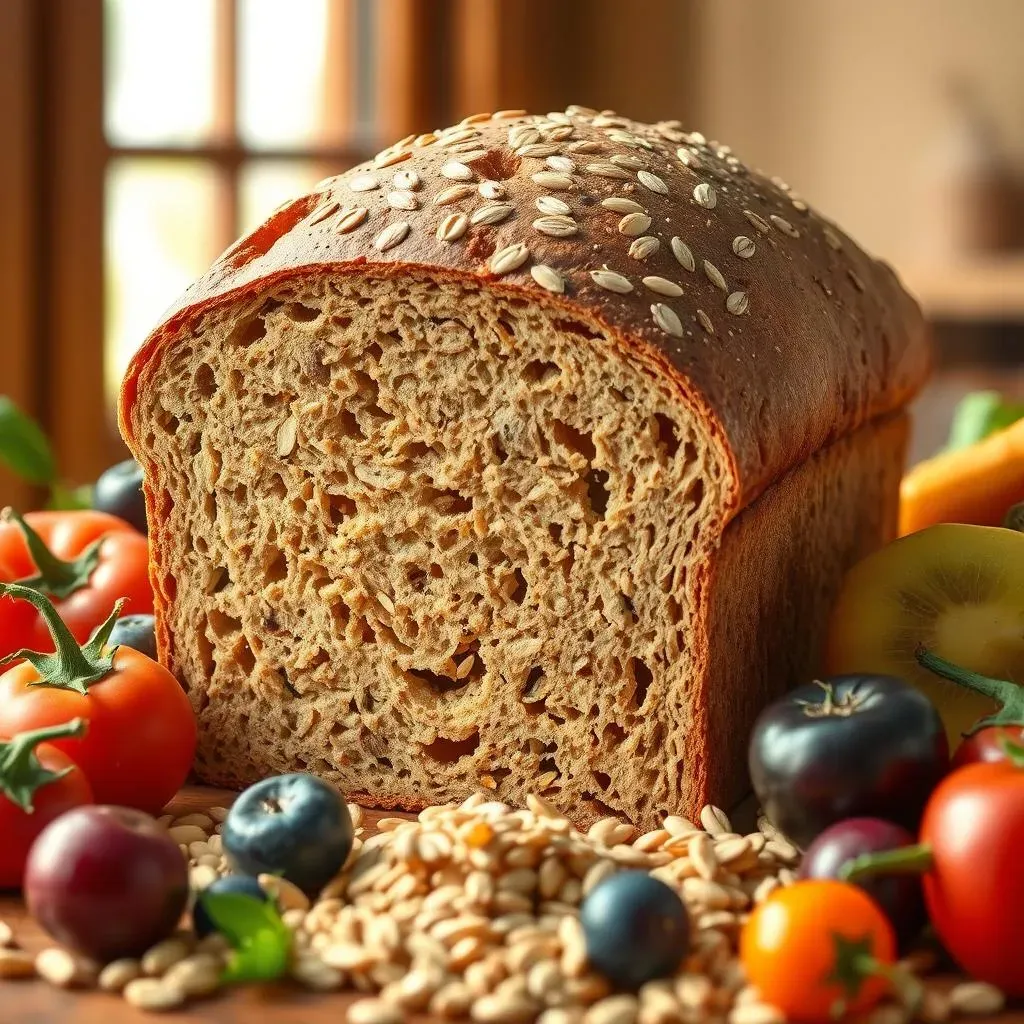
The Scoop on Grains: Whole vs. Refined
Grain Basics: What Are We Talking About?
so when we talk about grains, we're talking about foods made from wheat, rice, oats, cornmeal, barley, and other cereal grains. Think bread, pasta, cereal, and even some tortillas. They're a staple in many diets, and they give us a lot of energy. But not all grains are created equal; that's where the whole vs. refined thing comes in, and it's kind of a big deal for our health. I mean, who knew something as simple as grain could be so complicated?
Basically, grains have two main parts: the germ, the bran, and the endosperm. Whole grains keep all three parts intact. Refined grains, on the other hand, have the germ and bran removed, leaving only the starchy endosperm. That might not sound like a huge difference, but it impacts the nutrients and fiber we get. It’s like the difference between a full loaf of bread and just the fluffy, white center – one's got a lot more going on!
The Difference: Why Whole Grains Rule
So, why is keeping all those parts important? Well, the bran is packed with fiber, which is awesome for digestion and keeping you feeling full. The germ is loaded with vitamins, minerals, and healthy fats. When you remove those, you're mainly left with the endosperm, which is mostly carbohydrates. Refined grains are basically the carbs without the good stuff, they tend to spike our blood sugar quickly and don't keep us full for long. Whole grains, on the other hand, release energy more slowly and steadily, which is much better for our bodies.
Think of it like this: whole grains are like a complex machine with all its parts working together, while refined grains are like a stripped-down version that's missing some essential components. It's similar to eating a whole apple versus just drinking apple juice; you get the fiber and all the nutrients when you eat the whole apple. That's why health experts usually recommend making at least half of your grain choices whole grains.
Grain Type | Parts Included | Key Nutrients | Health Impact |
|---|---|---|---|
Whole Grain | Bran, germ, endosperm | Fiber, vitamins, minerals | Better digestion, sustained energy |
Refined Grain | Endosperm only | Mostly carbohydrates | Quick energy spike, less filling |
Making the Switch: Easy Ways to Choose Whole Grains
Switching to whole grains might seem like a big change, but it's actually pretty easy. Start by swapping out your regular white bread for whole wheat bread. Instead of white rice, try brown rice or quinoa. Look for cereals that list whole grains as the first ingredient. And don't be afraid to experiment with different whole-grain options like oats, barley, and even popcorn! It's all about making small, sustainable changes over time.
Also, a lot of products will have a whole grain label, so keep an eye out for those when you're at the grocery store. It's not about being perfect, but being more mindful about the choices you make. The more you incorporate whole grains into your diet, the more you’ll benefit from their fiber and nutrients. Trust me, your body will thank you for it!
Would Pancakes Be a Grain? Understanding the Ingredients

Would Pancakes Be a Grain? Understanding the Ingredients
Pancake Ingredients: The Usual Suspects
so let's get to the heart of the matter: would pancakes be a grain? Well, it's not a simple yes or no. Most pancakes are made with flour, which is definitely a grain product. But, that's not the only thing that goes into a pancake. You've got your liquid (milk, buttermilk, or even water), eggs, some sort of fat (like butter or oil), a leavening agent (baking powder or baking soda), and maybe a touch of sugar and salt. So while flour is a big component, it's not the whole story. It's like asking if a cake is just flour; there are other things that make it a cake, right?
The type of flour really matters here, too. Are we talking all-purpose flour, which is refined? Or are we using whole wheat flour, which is a whole grain? The type of flour is what determines if the pancakes are primarily a refined grain or a whole grain. You could even use other types of flour like oat flour, which has a different nutrient profile. It's all about the base ingredient, and that's what we need to look at to answer our main question.
The Grain Component: Flour Power
So, yes, the flour is the grain component in pancakes. If you use a refined flour, like the all-purpose white stuff, then your pancakes are primarily a refined grain. This means they will be lower in fiber and nutrients compared to whole grain options. But, if you use whole wheat flour, oat flour, or another whole grain flour, then your pancakes can be considered a whole grain food. It all comes down to the type of flour you choose. It's kind of like choosing between a regular soda and a sparkling water; both are liquids but their nutritional value is different.
It is important to recognize that many pancake recipes use a combination of flours or add other ingredients that could shift their nutritional profile. For instance, some recipes might add things like fruit, nuts, or even protein powder. This is why it's super important to check your recipe and make informed decisions about your ingredients. Knowing what you are putting into your body is always a good idea.
Flour Type | Grain Type | Nutrient Profile | Pancake Impact |
|---|---|---|---|
All-purpose | Refined | Lower in fiber, fewer nutrients | Refined grain pancake |
Whole wheat | Whole | High in fiber, more nutrients | Whole grain pancake |
Oat Flour | Whole | Good source of fiber | Whole grain pancake |
Beyond the Flour: The Other Ingredients
we know the flour is key for deciding if pancakes are a grain, but the other ingredients play a big role too! Things like eggs, milk, and butter add important nutrients and fats, but they don't make the pancake a grain. These ingredients contribute to the overall nutritional value and can influence how the pancakes impact your health. For example, adding more eggs will boost the protein content, while using butter will increase the fat content. It's all about balance and making sure you're getting a mix of different nutrients.
Also, consider the toppings. Drenching your pancakes in syrup might taste amazing, but it adds a lot of sugar. Choosing fresh fruit or a dollop of yogurt can make your breakfast both delicious and nutritious. So while the flour is what makes it a grain, the other stuff is what transforms it into a meal, and that's just as important. It's like painting a picture; the canvas is the grain, but the colors are all the other ingredients!
Grain Guidelines: How Much Do You Need?
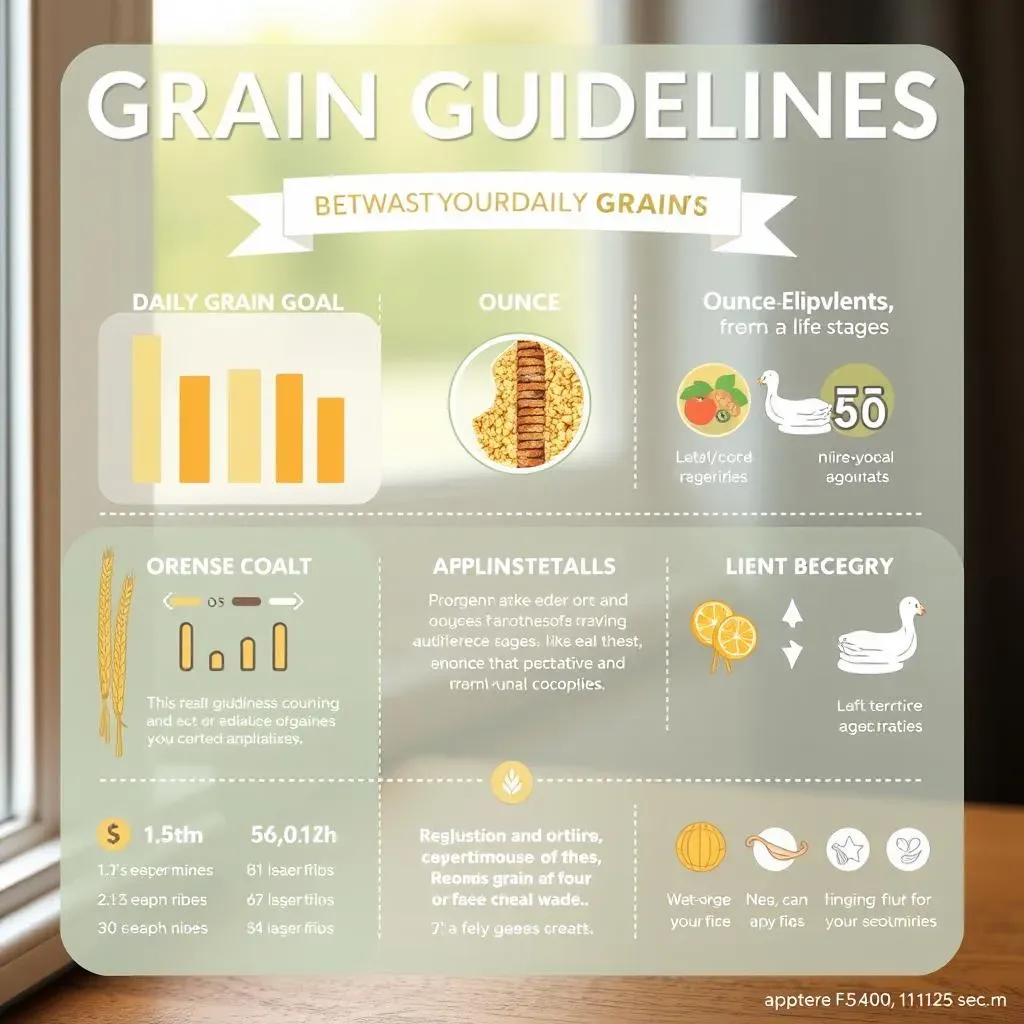
Grain Guidelines: How Much Do You Need?
The Daily Grain Goal: It's Not One-Size-Fits-All
so, you're probably wondering, how much grain should I actually be eating? Well, it's not a simple number, and it really does depend on your age, sex, height, weight, and how active you are. It's like figuring out how much water you need each day; it varies based on your body and activity levels. The general idea is that you should aim for a certain amount of grains daily, but the exact quantity is different for everyone. It's not about eating as much as you can, but about finding the right amount for your body.
MyPlate provides some general guidelines to help you figure out your daily grain needs. For example, a moderately active adult might need anywhere from 6 to 8 ounce-equivalents of grains per day, with at least half of those being whole grains. But, someone who is really active may need more, and someone who is less active might need less. It's always a good idea to listen to your body and adjust your intake based on how you feel. It is also important to consider that these are just guidelines, and they are not strict rules.
Ounce-Equivalents: What Does That Even Mean?
so what's an "ounce-equivalent"? It's a way to measure the amount of grains you’re eating, and it’s not always about the actual weight. One slice of bread, for instance, is usually considered one ounce-equivalent, while a half cup of cooked rice or pasta is also one ounce-equivalent. It can get a little confusing when you are starting out, but it gets easier the more you practice. It is a way to keep track of how much grain you are consuming, and make sure you are meeting your goals.
The idea is to make sure you're getting the right amount of grains without having to measure everything with a scale. It's about finding foods that fit into your lifestyle and making smart choices within those guidelines. It's also about understanding that not all grains are the same, so it's important to focus on whole grain options when you can. This table gives you some common examples of what counts as an ounce-equivalent of grains.
Grain Food | Ounce-Equivalent |
|---|---|
1 slice of bread | 1 ounce |
1/2 cup cooked rice or pasta | 1 ounce |
1/2 cup cooked cereal | 1 ounce |
1 small tortilla (6 inch) | 1 ounce |
1 mini bagel | 1 ounce |
Adjusting for Life Stages: Kids, Teens, and Adults
It's also super important to remember that grain needs change throughout our lives. Kids and teens, who are growing and active, often need more grains than less active adults. For example, a toddler might need 3 to 4 ounce-equivalents of grains per day, while a teenage athlete could need up to 10 or more. It's all about providing the right amount of energy to support their growth and activity levels. It is important to always adjust to your needs.
As we get older, our grain needs might decrease slightly, especially if we become less active. But, it's still important to get enough grains to support our health. It's not about restricting, but about making sure we're getting the right balance of nutrients for our particular stage of life. So, whether you're a kid, a teen, or an adult, pay attention to your body and adjust your grain intake accordingly. It is always about making informed choices and taking care of your body.
Health Benefits of Eating Grains, Especially Whole Grains
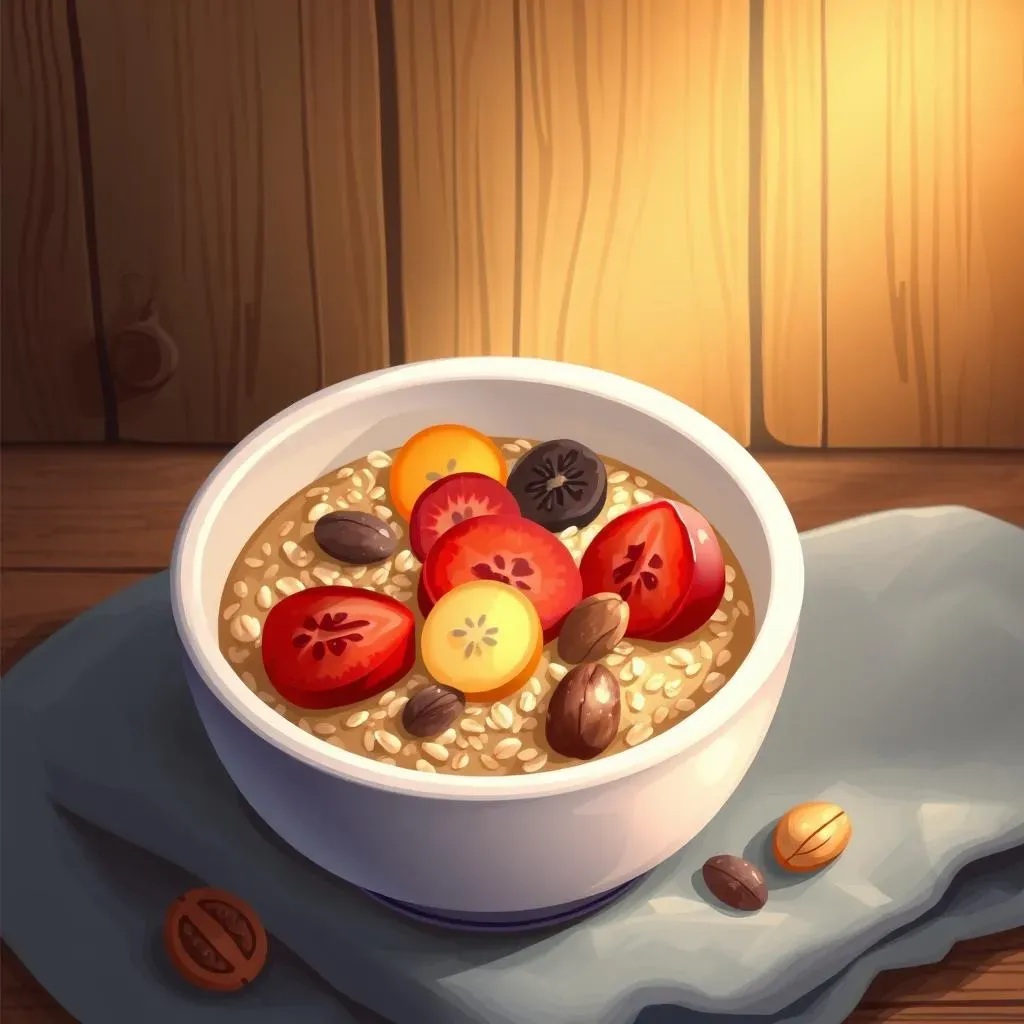
Health Benefits of Eating Grains, Especially Whole Grains
The Heart of the Matter: Grains and Heart Health
so let's talk about why grains, especially the whole kind, are so awesome for your heart. Eating whole grains regularly can actually lower your risk of heart disease, which is a big deal. It's not just some health fad; it's backed by solid science. The fiber in whole grains helps to reduce bad cholesterol levels, which can clog up your arteries and lead to heart problems. It's like having a tiny cleaning crew working inside your body, keeping your heart happy and healthy. I find it super cool that something as simple as a bowl of oatmeal can have such a positive impact.
Plus, whole grains are packed with antioxidants, which protect your cells from damage. They also help keep your blood pressure in check and reduce inflammation, all of which are great for your cardiovascular system. It's like giving your heart a shield against potential problems. It’s not a cure-all, but it’s a really important part of a heart-healthy lifestyle. It's a simple way to give your heart some love, and who doesn't want a happy heart?
Fiber Power: Digestion and Beyond
Another big win with whole grains is their fiber content, and this is something I'm really excited about. Fiber is like the unsung hero of digestion. It helps keep things moving smoothly through your digestive tract, preventing constipation and promoting a healthy gut. A happy gut can lead to a happier you. It's like having a well-oiled machine; everything just works better when it's running smoothly. I always think about it like a broom, cleaning everything up as it goes.
But fiber does more than just keep you regular. It also helps you feel full, which can be super helpful for managing your weight. It's like a natural appetite suppressant, making you less likely to overeat. And, some types of fiber help to regulate your blood sugar levels, which is particularly important for people with diabetes or at risk of developing it. It's a win-win situation; you get better digestion and you can manage your weight better. It’s like a two-for-one deal!
More Than Just Fiber: Vitamins and Minerals
It's not just about fiber, though. Whole grains are also packed with important vitamins and minerals that your body needs to thrive. We are talking about B vitamins, iron, magnesium, and selenium, all of which are essential for various bodily functions. B vitamins help with energy production, iron is important for carrying oxygen in your blood, and magnesium and selenium help with muscle function and immune support. It's like a multivitamin packed into every grain, and who doesn't love a good multi vitamin? It is a really easy way to get some of the essential nutrients you need.
So, by choosing whole grains over refined grains, you’re not just getting more fiber, you're also getting a boost of these vital nutrients. It's like upgrading from a basic model to a premium version; you get all the extra features that make a difference. It's about nourishing your body from the inside out and giving it what it needs to function at its best. It's a simple way to show your body some love and make sure it is working the way it should.
Nutrient | Benefit |
|---|---|
Fiber | Aids digestion, manages weight |
B Vitamins | Supports energy production |
Iron | Carries oxygen in the blood |
Magnesium | Supports muscle function |
Selenium | Supports immune system |
Pancakes and Your Diet: Making Smart Choices
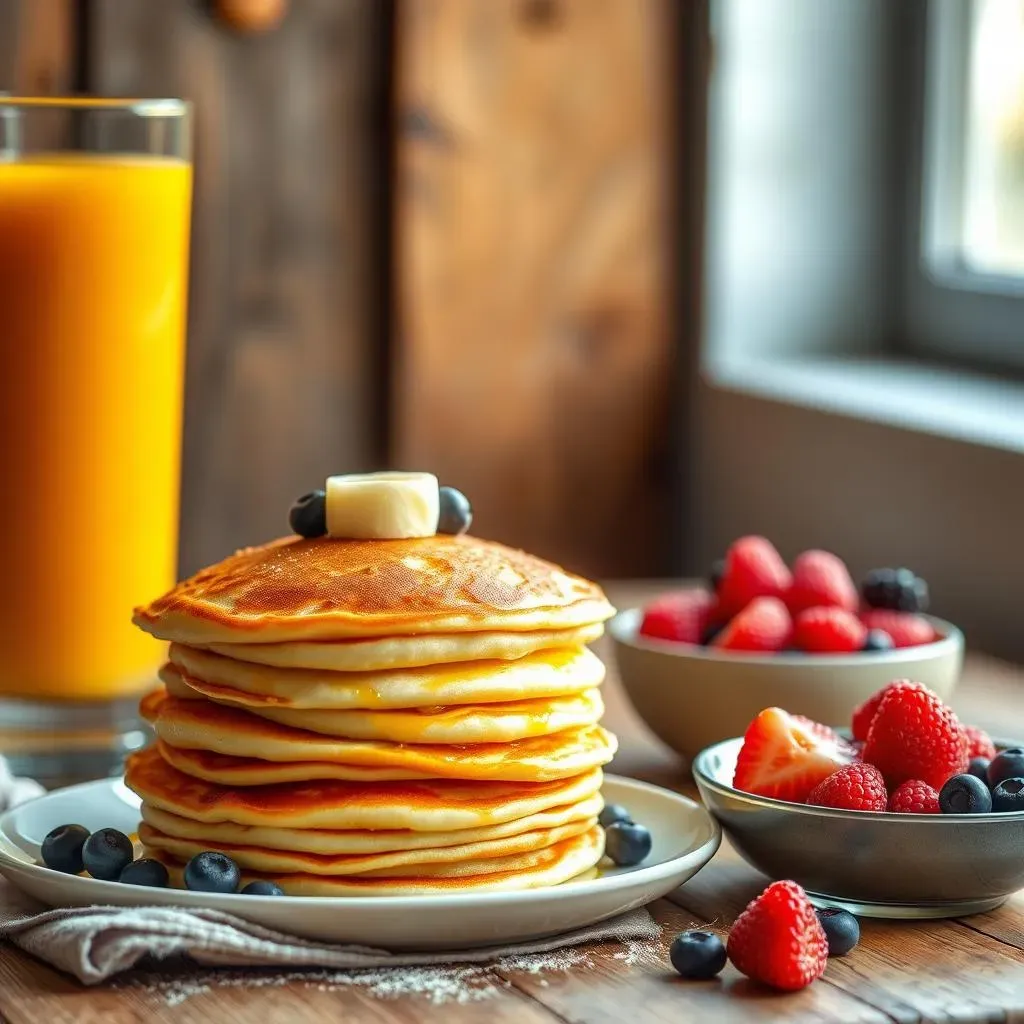
Pancakes and Your Diet: Making Smart Choices
Pancakes: The Good, the Bad, and the Fluffy
so let's talk pancakes. They can be a delicious part of your diet, but it really depends on how you make them and what you put on them. It's like having a blank canvas; you can create a masterpiece or a mess, depending on your choices. If you're making them with refined flour and drowning them in syrup, they're not the healthiest option. But, if you're using whole-grain flour and topping them with fresh fruit, you're on a much better track. It's all about making smart choices and being mindful of what you're putting into your body. It’s really about finding the balance that works for you.
The key is to think of pancakes as a sometimes food, not an everyday staple, especially if you are using refined grains. It's similar to having a slice of cake; it's fine as a treat, but not as a meal replacement. When you do have pancakes, focus on making them as nutritious as possible. This means choosing whole grains, adding some protein, and loading up on healthy toppings. It's not about deprivation, but about making small changes that can have a big impact on your health. It is all about making better choices.
Smart Swaps: Upgrading Your Pancake Game
So, how can you make your pancakes more nutritious? First, swap out that refined white flour for whole wheat, oat, or even a mix of different whole grain flours. This will bump up the fiber content and give you sustained energy. Next, consider adding some protein. You can do this by adding an extra egg to your batter or mixing in some protein powder or even some greek yogurt. It's like giving your pancakes a power boost, making them more filling and satisfying. Also, you can add some healthy fats, like some nuts or seeds, to make them even more nutritious. It’s all about making small changes that can have a big impact.
Also, think about your toppings. Instead of drenching your pancakes in syrup, try topping them with fresh berries, sliced bananas, or a dollop of Greek yogurt. It's like adding a splash of color and flavor, without all the added sugar. You could also sprinkle some cinnamon or nutmeg for extra flavor without the extra calories. It's about making your pancakes both delicious and nutritious, and it's easier than you think. It's not about restricting yourself, but about making smart swaps that can improve your overall health. It’s all about upgrading your pancakes, and making them work for you.
Swap | Why | Benefit |
|---|---|---|
Refined flour for whole grain | More fiber, nutrients | Sustained energy, better digestion |
Syrup for fresh fruit | Less added sugar, more vitamins | Healthier, more natural sweetness |
Butter for nuts or seeds | More healthy fats, protein | More nutrients |
Plain batter for added protein | More protein | More filling and satisfying |
MyPlate Resources: Tools for a Balanced Life

MyPlate Resources: Tools for a Balanced Life
MyPlate Website: Your One-Stop Shop
So, you're probably thinking, " this is great, but where do I even start?" Well, the MyPlate website is like your ultimate resource for all things healthy eating. It's not some boring, dusty old website; it's actually really user-friendly and packed with helpful information. Think of it as your personal nutrition coach, available 24/7. It's got everything from articles and tips to meal planning tools and recipes. I always find myself going back to it when I need a refresher or some new ideas. It's like having a whole library of healthy eating knowledge at your fingertips.
The website is organized super well, making it easy to find what you need. You can explore different food groups, learn about healthy eating at different life stages, and even find tips for eating on a budget. There's also a section for professionals, if you're a dietitian or a health educator. It's not just for individuals; it's a resource for the whole community. It's really a great starting point for anyone looking to improve their diet and make healthier choices. It’s like a treasure map to a healthier you!
Start Simple with MyPlate App: Your Pocket Guide
If you're always on the go, the Start Simple with MyPlate app is a total game changer. It's like having a mini MyPlate guide right in your pocket. You can track your meals, set goals, and get personalized tips based on your progress. It's not some complicated tracking system; it's designed to be simple and easy to use. I find it super helpful when I'm trying to stay on track with my eating habits. It's like having a little cheerleader in your pocket, encouraging you to make healthy choices.
The app is also great for learning about portion sizes. You can use it to visualize what a healthy portion looks like, which is super helpful when you're eating out or cooking at home. It's all about making small changes that can have a big impact on your overall health. Plus, it’s got a lot of cool features like recipe ideas and healthy eating challenges. It’s more than just a food tracker; it’s a tool for building healthy habits that last. It’s like having a pocket-sized personal trainer for your eating habits.
Resource | Description | Key Features |
|---|---|---|
MyPlate Website | Comprehensive online resource | Articles, tips, meal planning, recipes |
Start Simple with MyPlate App | Mobile app for tracking and tips | Meal tracking, personalized goals, portion visualization |
Based on Science: Dietary Guidelines for Americans
It's also important to remember that MyPlate isn't just some random guide; it's actually based on the Dietary Guidelines for Americans, 2020-2025. These guidelines are developed by a team of experts and are based on the latest scientific research. It's not just some fad diet; it's a science-backed approach to healthy eating. I always feel good knowing that the information I'm using is based on solid evidence. It’s like having a roadmap that’s been tested and proven to work.
The guidelines cover a wide range of topics, from food groups to life stages, and they're updated regularly to reflect the latest scientific findings. So, when you're using MyPlate, you can be confident that you're getting the most up-to-date and accurate information. It's not about following a strict set of rules; it's about making informed choices that support your overall health and well-being. It's like having a team of nutrition experts guiding you every step of the way. It’s all about making informed choices, and MyPlate is here to help you do just that.
The Final Stack: Pancakes and Grains
So, would pancakes be a grain? The answer, as we've discovered, isn't a simple yes or no. It really depends on the ingredients. While many pancakes are made with refined grains, choosing whole-grain options can make them a healthier part of your diet. Remember, balance is key. Understanding what constitutes a grain, knowing the difference between whole and refined, and using resources like MyPlate can guide you toward making choices that nourish your body. Enjoy your pancakes, but also remember to eat a variety of foods for a well-rounded, healthy lifestyle. It's all about making informed, delicious decisions.